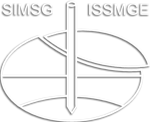Response of framed buildings on separate footings to tunnelling: a hybrid modelling study
Response of framed buildings on separate footings to tunnelling: a hybrid modelling study
Within the framework of hybrid geotechnical modelling, the coupled centrifuge-numerical modelling (CCNM) technique, developed at the University of Nottingham Centre for Geomechanics (NCG), is becoming a well-established approach to study the interaction between tunnel excavation, related soil movements, and induced response of affected structures. The CCNM technique involves a centrifuge model that includes the tunnel, soil, and foundation system, and a parallel finite element numerical model schematising the structure. Displacement and loading data at the structure-foundation interface are shared between the centrifuge and numerical domains in real-time, such that a global evaluation of the interactions occurring can be captured for buildings that require a higher level of detail to be fully described. This study focused on the application of CCNM technology to the analysis of a 2D bare frame with separate strip footings running parallel to the tunnel axis. The frame geometry is consistent with previous conventional centrifuge tests (i.e. not hybrid), involving a small-scale physical model of the building. As such, the presented CCNM test aims to provide benchmark data to validate the hybrid modelling method before considering frame configurations with infills. The findings are presented for a case in which the foundation rests on the soil surface.
Chiara Spaggiari; Chuanjin Tang; Daniela Boldini; M. Alec Marshall
5th European Conference on Physical Modelling in Geotechnics (ECPMG2024)
Geotechnical infrastructure
https://doi.org/10.53243/ECPMG2024-23
